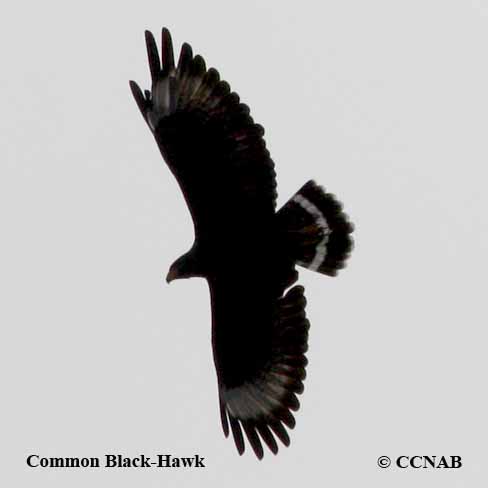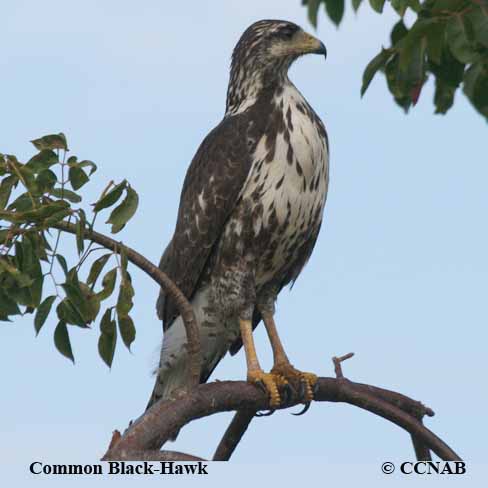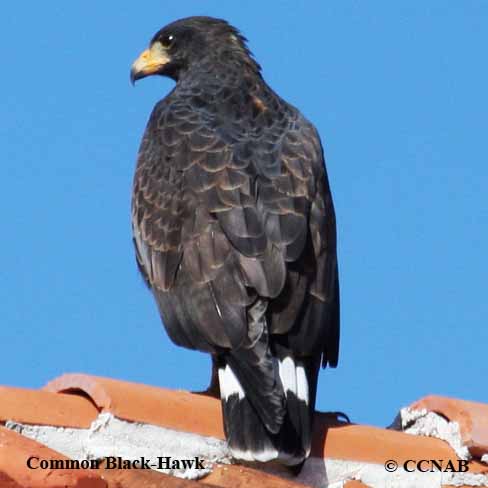North American Bird Search Box
This search box can be used to find bird species using bird's english, french or latin name, or to identify bird by its 4 letter Alpha Code
Field Guide for all the Birds of North America
Common Black-Hawk
4 Letter (english names) Alpha Code: COBH (2)
Buse noire
Buteogallus anthracinus
Information, images and range maps on over 1,000 birds of North America, including sub-species, vagrants, introduced birds and possibilities
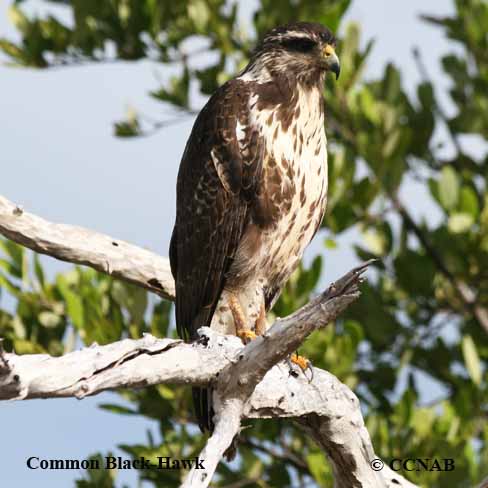
Species: The Common Black-Hawk (Buteogallus anthracinus) is found in southwestern areas of the USA. This bird of prey, a member of the buteo family, can be mistaken for the Zone-tailed Hawk, which is another all-black hawk that is seen in their shared regions. These hawks prefer to feed on reptiles, crustaceans and fish. It is typical to see these hawks perched on a limb in a tree, rather than soaring in search of prey. At this time, the Black-Hawk seen in Cuba is considered a sub-species to the Common Black-Hawk seen on the continent.
Distinctions: The male and female are similar in appearance, the female being the larger of the two. Adults are all black, yellow feet and ceres. Wide wings, giving the impression of a wide short tail. They have one large white tail band with small white outer tip. The juvenile, unlike the parent, has a brown body, heavy streaking on the head, flanks and breast. The tail has many small wavy bands.
Voice: As in other birds of prey, loud rapid cries. May make calls from a perch or when it is in the air.
Nesting: One to three white eggs, with brown markings. Large nest is built high in a mature tree, made from branches and sticks, usually located near water.
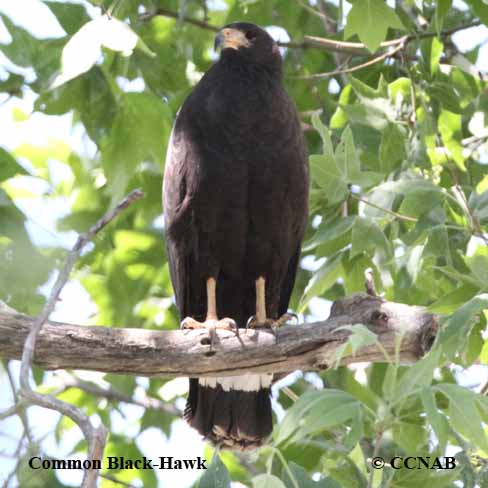
Life, Habitat & Pictures of North American Hawks
| B L | W W | W | Family | Latin Name |
|---|---|---|---|---|
| 21" 53cm | 46" 117cm | 2.1 lb 953g | Accipitridae | Buteogallus anthracinus |
North American Birds Calls
- Click here
- Summer
- Year Around
- Winter
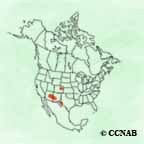
Distribution: Bird seen in the USA and migrates into the south in the winter months. The Common Black-Hawk seen in Mexico and Central America may or may not migrate. There is an established population in Arizona, where it is most likely to be seen. There is also a possibility of seeing these hawks in New Mexico and Texas.
Reference to Other Bird Site:
ABA - American Birding Association This site represents an organization that maintains official records of all birds species that have been proven to have been seen inside the perimeters of the North American Continent and the surrounding bodies of water. Regular revised versions are posted to keep the bird list current at all times. This is the list used by all serious birders over their lifetime. You may be aware of the movie called the "Big Year". It was with this list that all the competing birders used in an attempt to set a new record as to how many bird species that could be seen by an individual birder in one calendar year.
